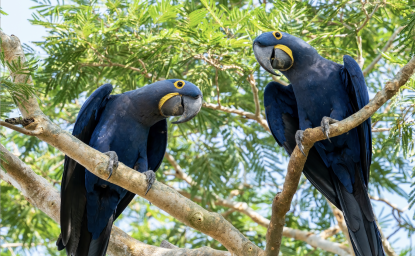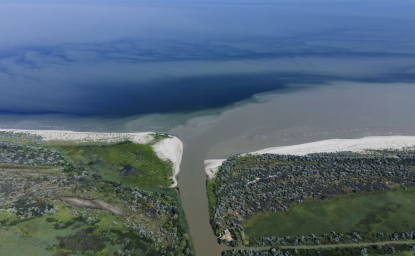"About every three or four generations, the Smithsonian has to rethink its purpose," said Wayne Clough, Secretary of the Smithsonian Institution, at a Director's Forum at the Wilson Center on July 8.
In his address, Clough laid out three challenges that the Smithsonian plans to address in the future: science, particularly global warming and biodiversity; education; and issues of national identity.
The Smithsonian's reach extends beyond the National Mall and Washington, D.C., and even beyond American borders, with museums, libraries, and research centers in 88 countries worldwide. Clough described some of the Institution's efforts to address environmental issues both domestically and globally, from its environmental research center in Edgewater, Md., to its tropic research institution in Panama. He also emphasized that the National Zoo is a research institution as well as a tourist attraction. It was founded to address species preservation and now focuses on biodiversity, both at its park in Washington and its 3,000-acre area in the Virginia mountains devoted to deep habitat study.
Clough discussed Smithsonian plans to make use of technology to better educate its audience as well as engage them and make use of their knowledge. He detailed the "Encyclopedia of Life" (www.eol.org), a collaborative partnership with other institutions that aims to create a web page for each of Earths 1.8 million known living species—more than 160,000 of which have been cataloged thus far. The site is growing further with the help of teachers and students, as teachers have begun posting their lesson plans, and students upload globally positioned photos of species they've taken with smartphones.
Clough also discussed the potential merits of this collaborative approach in the age-long process of digitizing the Smithsonian's collection of 137 million objects. While this is a defined goal of the Institution, it is a daunting one that presents curatorial, technological, and financial challenges. Clough acknowledged that communal, or "wiki," collaboration via social networking may help in approaching this challenge.
Similarly, collaboration can benefit the Smithsonian museums, he said.
"We have over 30 groups and units and entities and centers that do education," He said. "But those education centers don't talk to each other."
However, the Institution is starting to organize more events that foster collaboration between museums. In February, on Abraham Lincoln's birthday, the Smithsonian held a two-day online seminar drawing from six different exhibits on the president, an event that drew classrooms from all 50 U.S. states and 75 countries. They are now planning a second one, on global warming, for this fall.
Throughout the address, Clough emphasized that the Smithsonian exists outside the confines of museum walls, that its collections must be global not only in scope but in reach. As the Smithsonian enters a globalizing technological era, so must its mission expand its focus to include this global audience.
"My hope, my goal for the Smithsonian in this new era, is that you have access to all that. You own it. You own these collections, and you should see them."
By Orr Shtuhl
Edited by Sharon McCarter
Related Links




